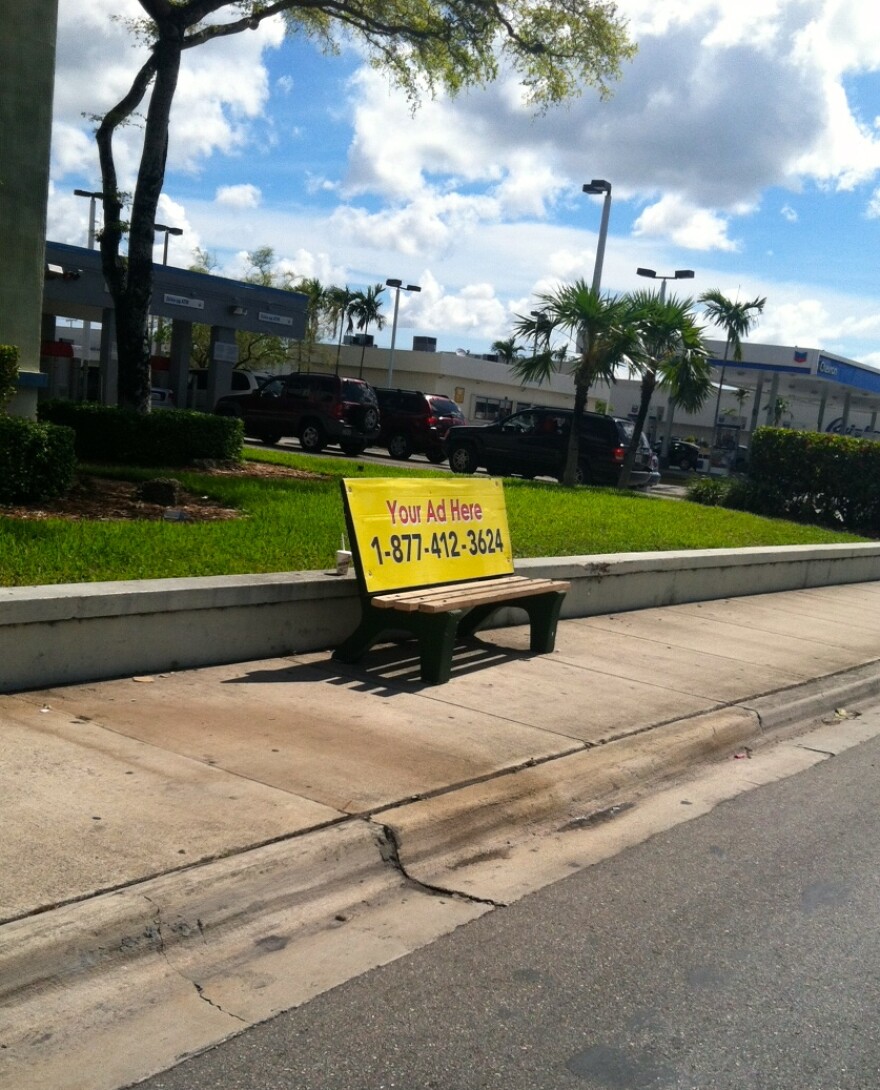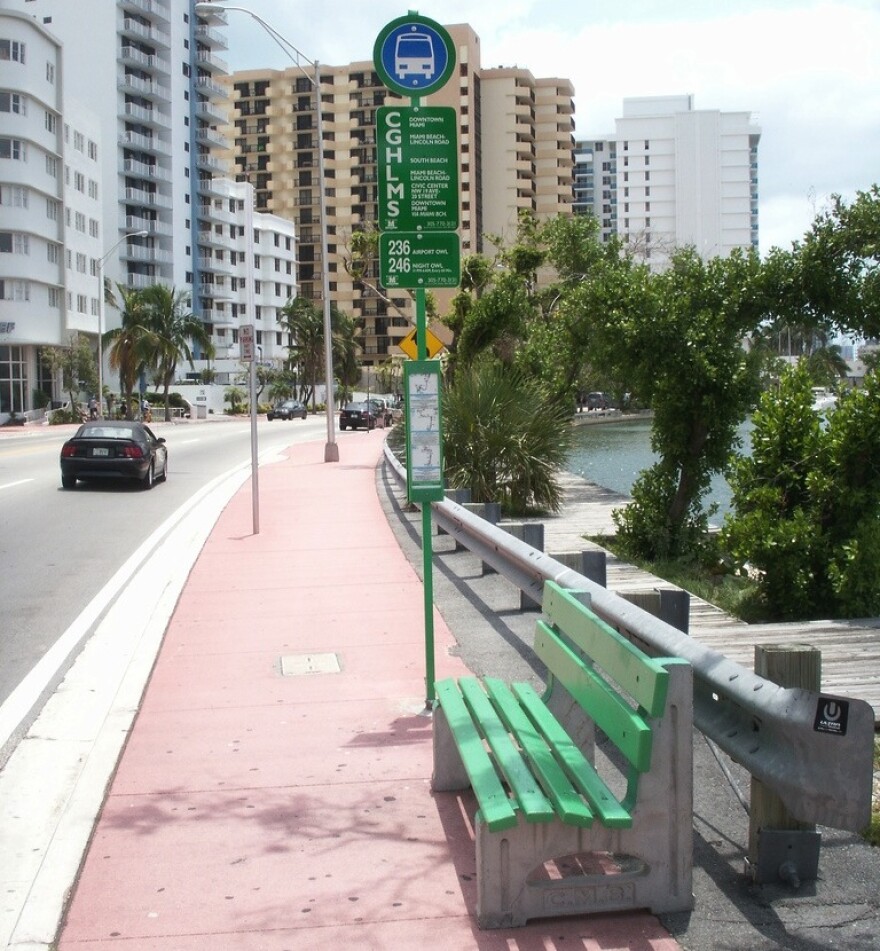There are about 8,000 bus stops throughout Miami-Dade County. But Miami-Dade Transit is only responsible for 3,300 -- municipalities are responsible for the approximately 5,000 that fall within city limits. Of the bus stops in unincorporated Miami-Dade, only about a third have a shelter.
Albert Hernandez is assistant director for the Division of Engineering, Planning and Development at Miami-Dade Transit.
He says the lack of shelters is apparently not due to money.
Walk me though what the process is for getting a bus shelter in Miami-Dade County.
Bus shelters are placed at bus stops with the greatest amount of patrons. ... We require at least 100 boardings per day at the location. ... We place bus benches at all locations that do not have shelters.
[It's] not so much of a resource issue. It’s really an issue of right-of-way.
Now, the issue with not having shelters at all our locations is not so much of a resource issue. It’s really an issue of right-of-way. We need, because of ADA requirements [American with Disabilities Act]… at least four feet from the front of the sidewalk to the first appurtenant: a column or a roof on the shelter. So, the sidewalk area in many parts of the county are only six feet wide so we can’t physically put in a shelter and meet the requirements of ADA, i.e. a wheelchair going in front of the bus shelter.
How does advertising [at the bus stops] play into the shelters? Does it fund the shelters?
Yeah, the beauty of this program that we have with the bus shelter program it’s kind of like a public-private partnership. The county does not have to fund the operation and maintenance of the shelter. We leverage the advertisement potential that a shelter could bring in to fund the maintenance and placement of these shelters.
They keep the advertising dollars, but they are responsible for replacing all the solar batteries, all the lighting and they have to maintain the shelters. They have to clean them weekly. They also have to do litter pick-up. A lot of the shelters, if not all of the shelters, have glass panels [and] they are constantly being vandalized. I think we get, like, 40 to 50 breaks per month. [The contractor] is responsible for coming in and replacing that glass panel.
All these costs have been transferred directly to the contractors.

What would you like to see the future of bus stops being? There are art competitions being held all over the world to spiff up shelters. What does Miami have in store for them?
One of the things we’re doing right now... is this concept of bus rapid transit, which is really limited stops, high-frequency service down corridors. … What we want to do is not just look at it as a bus stop and a shelter but we’re looking at it as a bus stop and a station.
The shelter would be a robust shelter with a certain scheme, a certain color. They may have architectural features, and in fact that’s built into the request for proposals and the contracts that we’re putting on the streets so we’re going to have actually as part of the beautification of the shelter, an artist come in as part of the team that would have certain themes built into the shelter that would compliment not only the environment, but also the community.
So there’s going to be a lot of public involvement with the design of these shelters and these shelters would have next-bus arrival information; possible level boarding where the platform where people wait are at the same elevation as the entrance to the bus in order to ease ingress and egress; information not only on next bus, but what’s going on with all the routes so anybody can see maybe connections.
This is something we’re excited about and it’s something that is right now in the planning and design phases.

It’s about to be the heat of the summer. Any recommendations for people waiting for the busses?
Well, I think now that we are going more to a modernized [system] ... a lot of this information is now available on your handheld devices. I would urge our patrons to get that information and, in order to reduce the amount of time waiting, they’ll know when to get out to a bus stop.*
*Real-time bus information is not yet available for all routes, but MDT hopes to roll that out within a year.
Ana Ponce posed the question ‘why don’t bus stops have a shelter?’ as part of our What’s The Story? project. We invite your questions and take you along on the journey to try and get some answers. You can submit your own question here.

